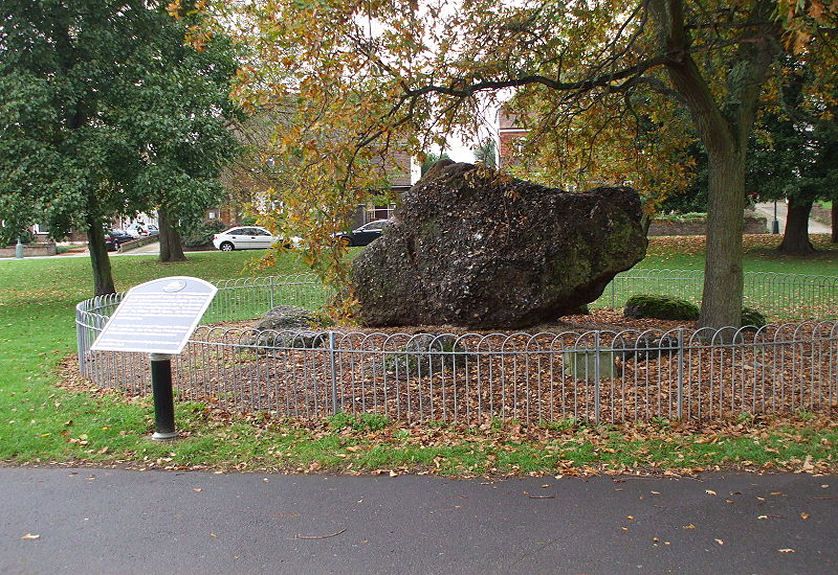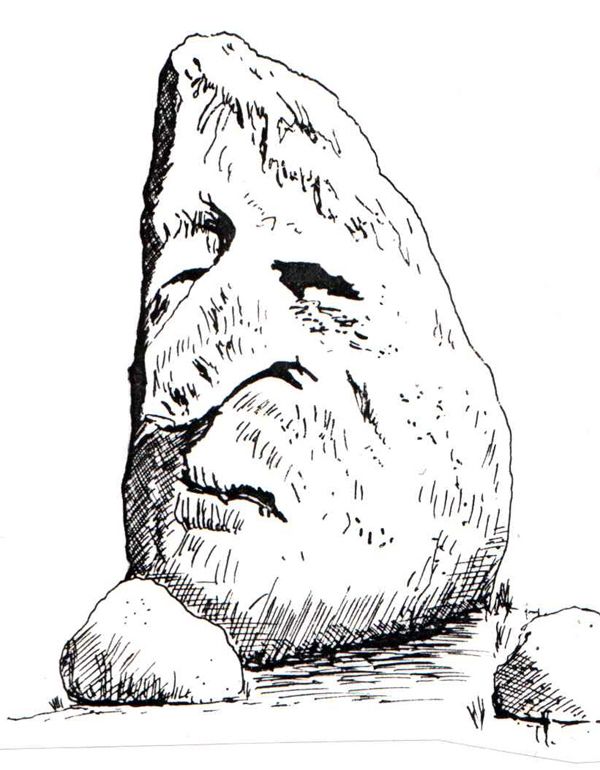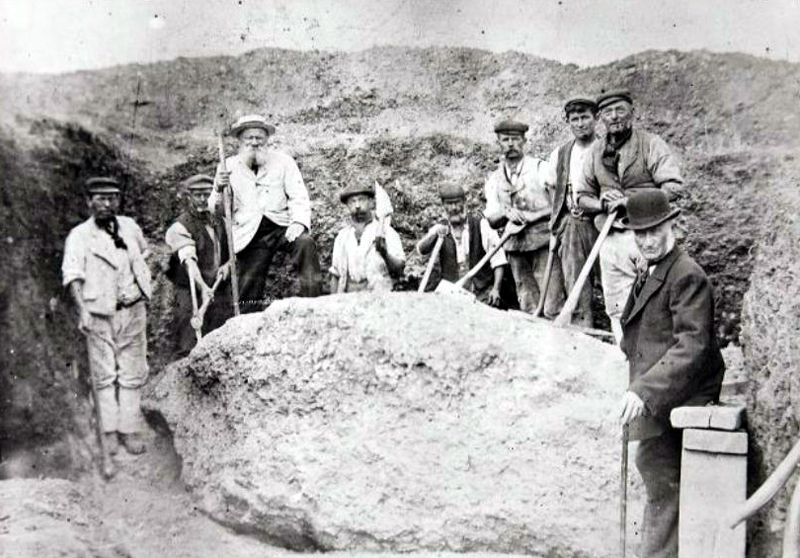
The Goldstone
To claim this EarthCache as a find you will need to visit the site and discover the answers to the following:
- Examine the Goldstone and the large stones surrounding it, describe their composition and explain the rusty colouring of the stone.
- The Goldstone and the surrounding stones include a stone which can be found locally in abundance. What is the name of this stone and name at least two places locally where you might find this stone.
- The texture of the stones is distinctive, what could this tell us about what was not involved in its formation?
- Optional task – please take a photo to show your visit to this site.
Please send the answers to me from my geocaching profile, and post any photos as part of your log.
The Goldstone is surrounded by myth and folklore and was once thought to be a sacred stone of druids; some say the stone shows the face of a druid deep in thought.


Can you see the face?
The stone was popular as a tourist attraction and the farmer that owned the land where it was originally found decided to bury it to keep the tourists off his crops.

Recovering the stone in 1900
Folklore says that the stone stubbed the foot of the devil when he was creating Devils Dyke so he hurled it to its original resting place in nearby Goldstone Bottom.
Sarsen stones found in Sussex were probably derived from the basal bed of the Woolwich and Reading Beds Lambeth Group. Late Paleocene in age (about 66 to 56 million years ago). The age of silicification (the process where organic material become saturated with silica) is uncertain but Sussex sarsens probably formed in a groundwater environment and could have developed as late as the Pleistocene (2,588,000 to 11,700 years ago). Source – East Sussex Local Geological Site (LGS) Survey 2010.